In this second of my Quad 405 series, I review the legendary Quad 405-2. Find out why there is so much love for these amazing little amplifiers and why you should buy one.
The Quad 405 and Quad 405-2 are incredible amplifiers, even now, some 40+ years after they were introduced to the world. This article you are reading right now is one of the most popular articles on my site. That should tell you something about the Quad 405’s enduring qualities and how people are drawn to these lovely amplifiers.
For more, check out my updated Quad 405-2 restoration and Quad 405 refresh articles!
Tellingly, the Quad 405 and 405-2 are most loved by those for whom listening to music is more important than looking at power meters, fiddling with controls and discussing technical specifications. It’s curious, but this little industrially styled amplifier punches well above its weight, all these years later.
Don’t get me wrong, I love power meters, but the 405 is a study in elegant, stripped-back, understated design. It’s a true champion of the ‘less is more’ philosophy and an amplifier that just gets out of the way and plays music. Surely this is what every true hi-fi lover wants in an amplifier?
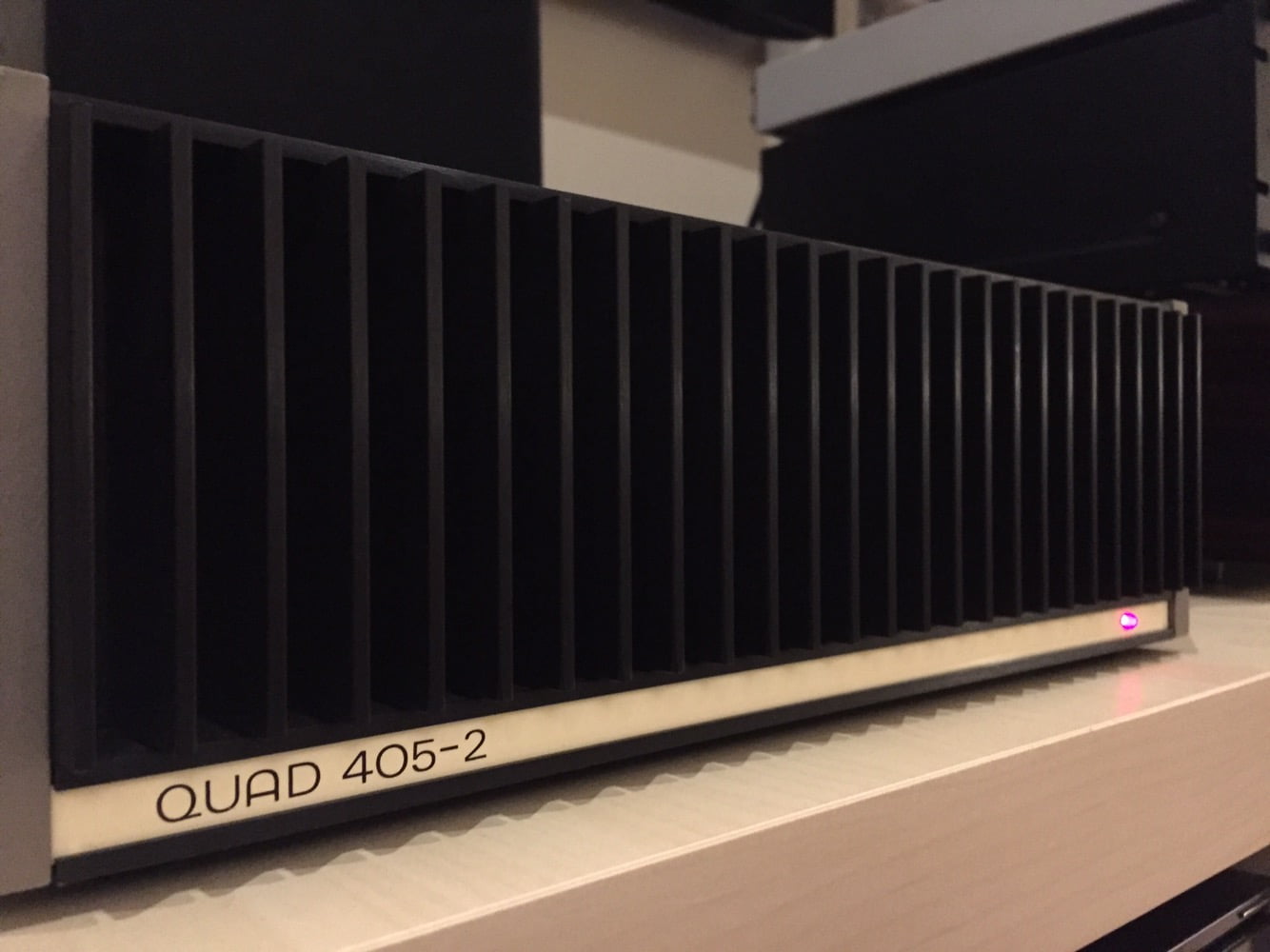
Quad 405 vs 405-2
The Quad 405 and 405-2 are almost identical, compact, heavy, power amplifiers. Both punch out 100 watts per channel, into 8 ohms. Where they differ is in their ability to deliver current into lower impedances.
Specifically, Quad modified the current limiting circuitry of 405-2 to be a little less aggressive. There’s a wider power envelope with the 405-2, allowing it to better drive lower impedance loads. If you own current-hungry speakers or those with a nominal 4 Ohm impedance, a 405-2 is the better option.
Quad also implemented various iterative improvements over a long period. In my opinion, the later amplifiers sound and perform slightly better. If you are interested in more technical detail, I recently overhauled a Quad 405-2 and you should also check out the ‘Further Reading’ section at the end of this article.
Innovation
Quad’s legendary design engineer Peter Walker utilised a principle called ‘feedforward error correction’ in the 405 design. He wrote a paper about it, which you can read here.
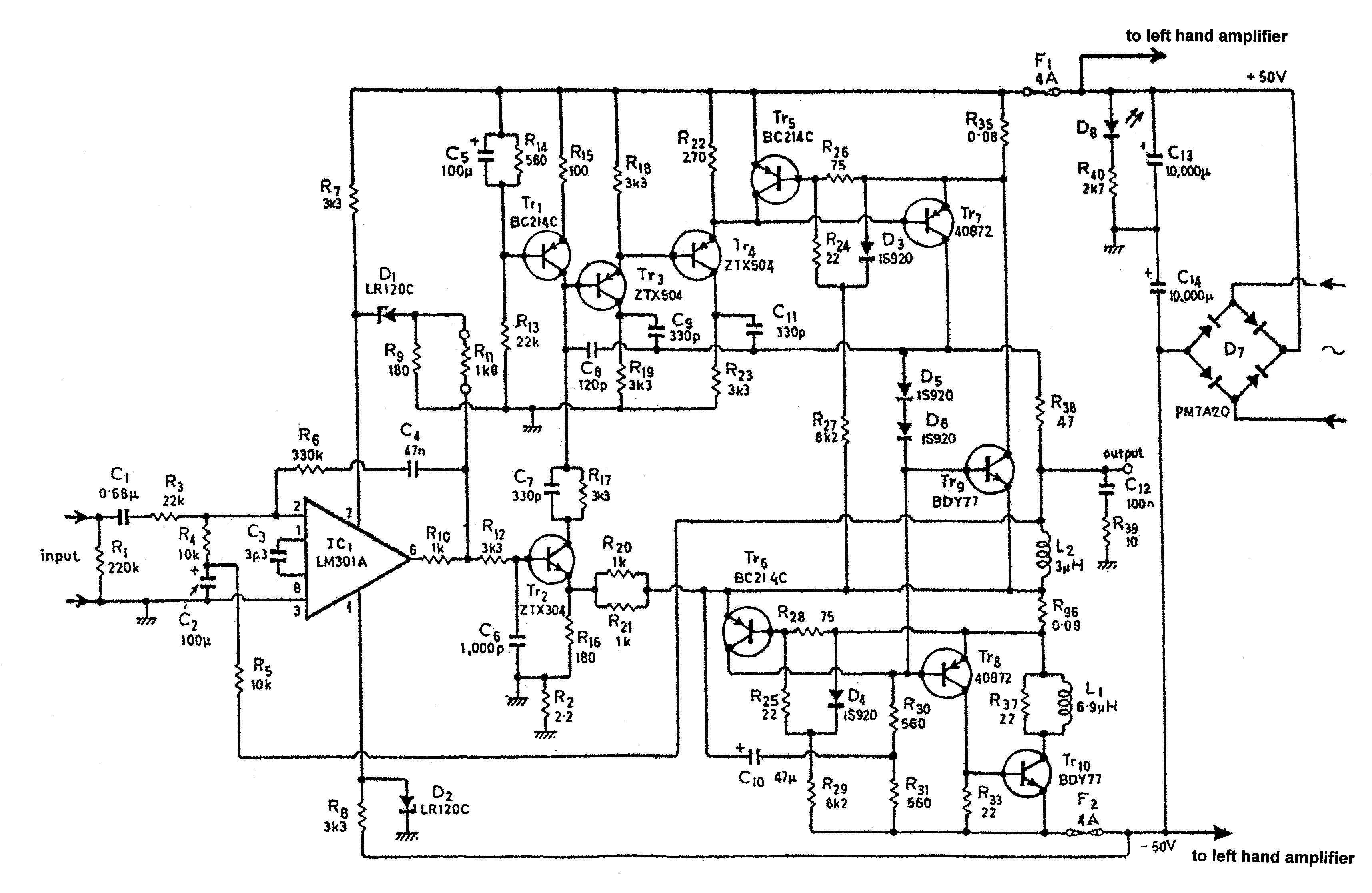
As Stereophile pointed out in their review of the original 405:
“This is something we don’t see too often: an entirely new approach to power amplifier design. As Quad points out in its literature for the 405, class-A operation of transistors provides the lowest distortion, but drastically limits the amount of power an output transistor can deliver without overheating. (Most transistor amps use class-AB output operation, in which each of a pair of power transistors handles part of each signal cycle and shuts down during the other part.
Imperfect synchronism between the two halves causes the familiar “crossover distortion,” which accounts for most solid-state sound. In class-A operation, each output transistor draws current though the entirety of each signal cycle, eliminating the crossover transition but doubling the amount of time current is drawn, and thus tending to cause the transistor to heat up more.)
In “current dumping,” a low-powered, low-distortion class-A amplifier is used to control the amount of current passing through a pair of heavy-duty “dumping” transistors, and it is the latter which provide the driving power (100Wpc) for the speakers.”
Stereophile didn’t particularly like the original 405, but they reviewed the 405-2 much more favourably. Keep in mind that the Quad 405 is about as far away from typical US amplifiers of the time as one could get. It’s unlike any other power amplifier from that era.
Elegant Design
The Quad 405 and 405-2 are compact, measuring just 115 x 340.5 x 195mm. At 9kg, this is a small, dense amplifier, heavy for its size. The 405 can deliver 100 watts per channel, more than enough to drive most speakers. I can’t think of a more compact and commercially available amplifier, with fewer parts or with a simpler layout than the Quad 405. Tell me if you know of one.
The driver stage consists of two TO-220 devices operating in class A. The output stage utilises two identical N-channel TO-3 devices, per channel. The driver stage is of very high quality, the output amp is the ‘current dumper’ and is a less precise, more robust unit operating in class B.
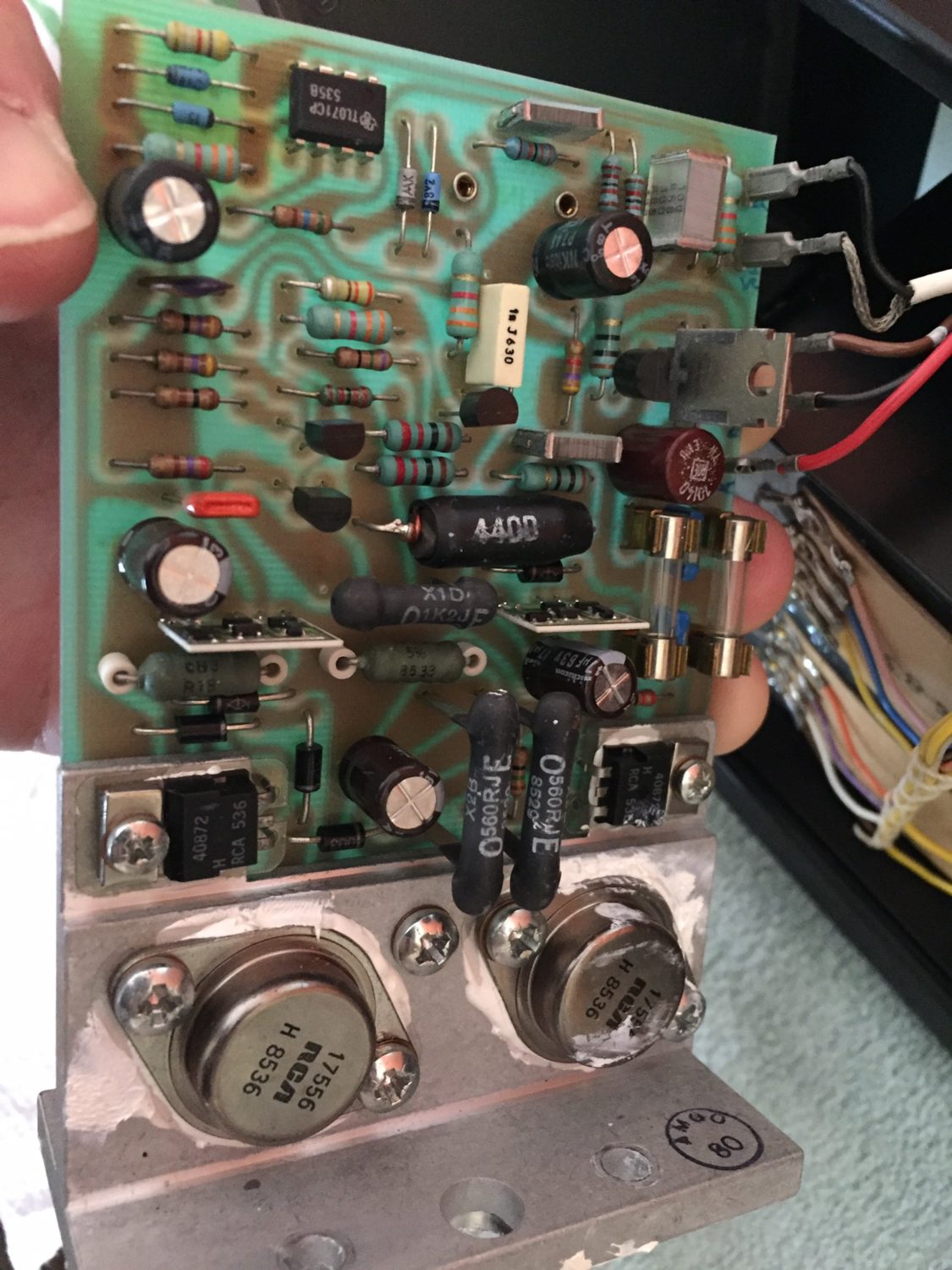
The driver and output transistors are thermally coupled to one block of aluminium. Everything is board-mounted, there’s almost no wiring. The assembly forms one amplifier module, there are two modules per chassis. This is evident in the images above and below.
Thermal coupling helps lower distortion and the design as a whole minimises wiring and maximises serviceabilireally is genius in terms of packaging and miniaturisation at a time before SMD manufacturing.
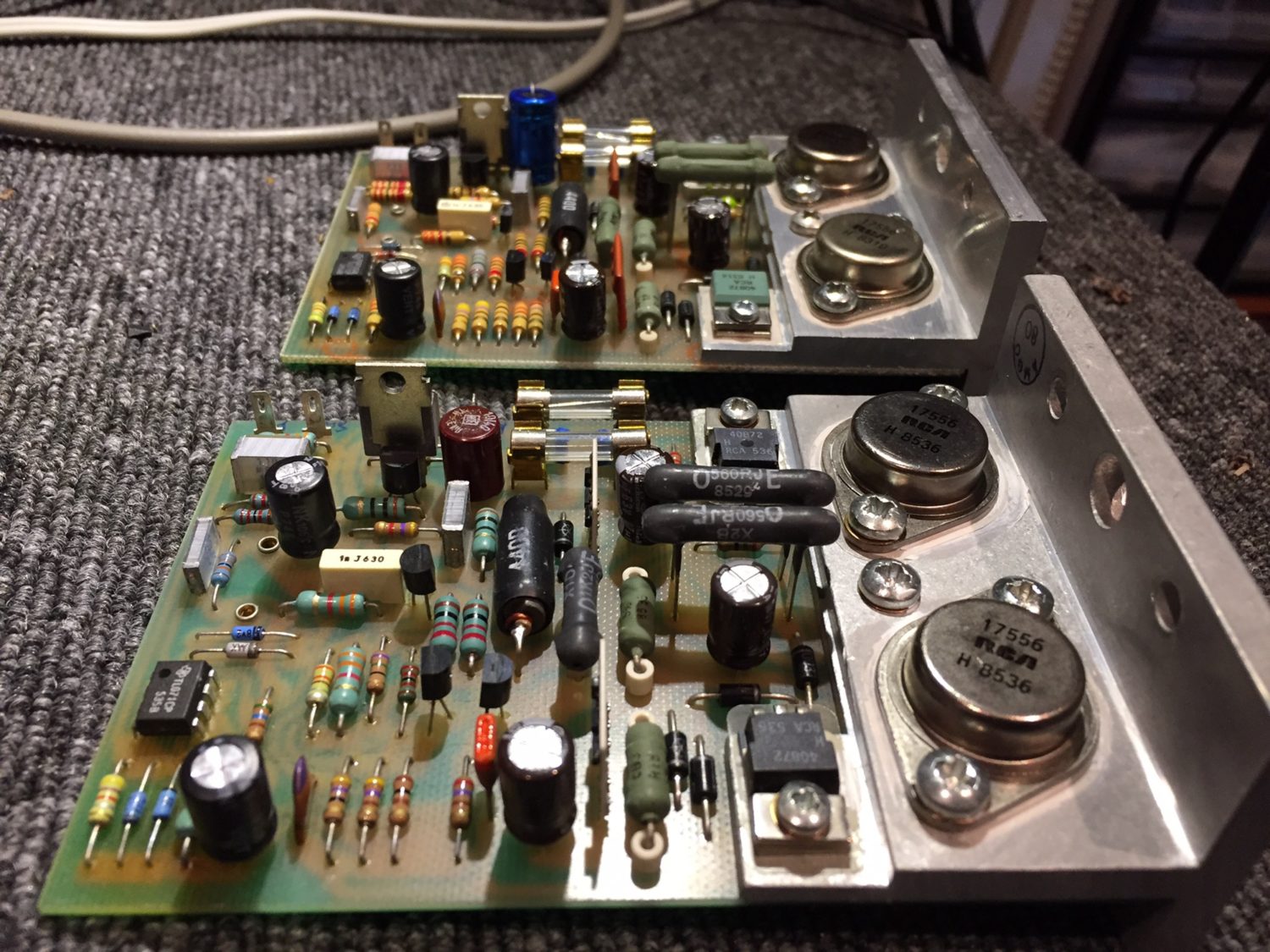
The two amplifier modules make up virtually all the electronics in a 405 / 405-2. Other elements include a superb-quality potted transformer, two 10,000uF filter capacitors, a diode bridge, some power supply wiring, a large front-mounted heatsink and some sockets. As a repairer, the Quad 405 series amplifiers are just about the easiest to service if you know what you are doing.
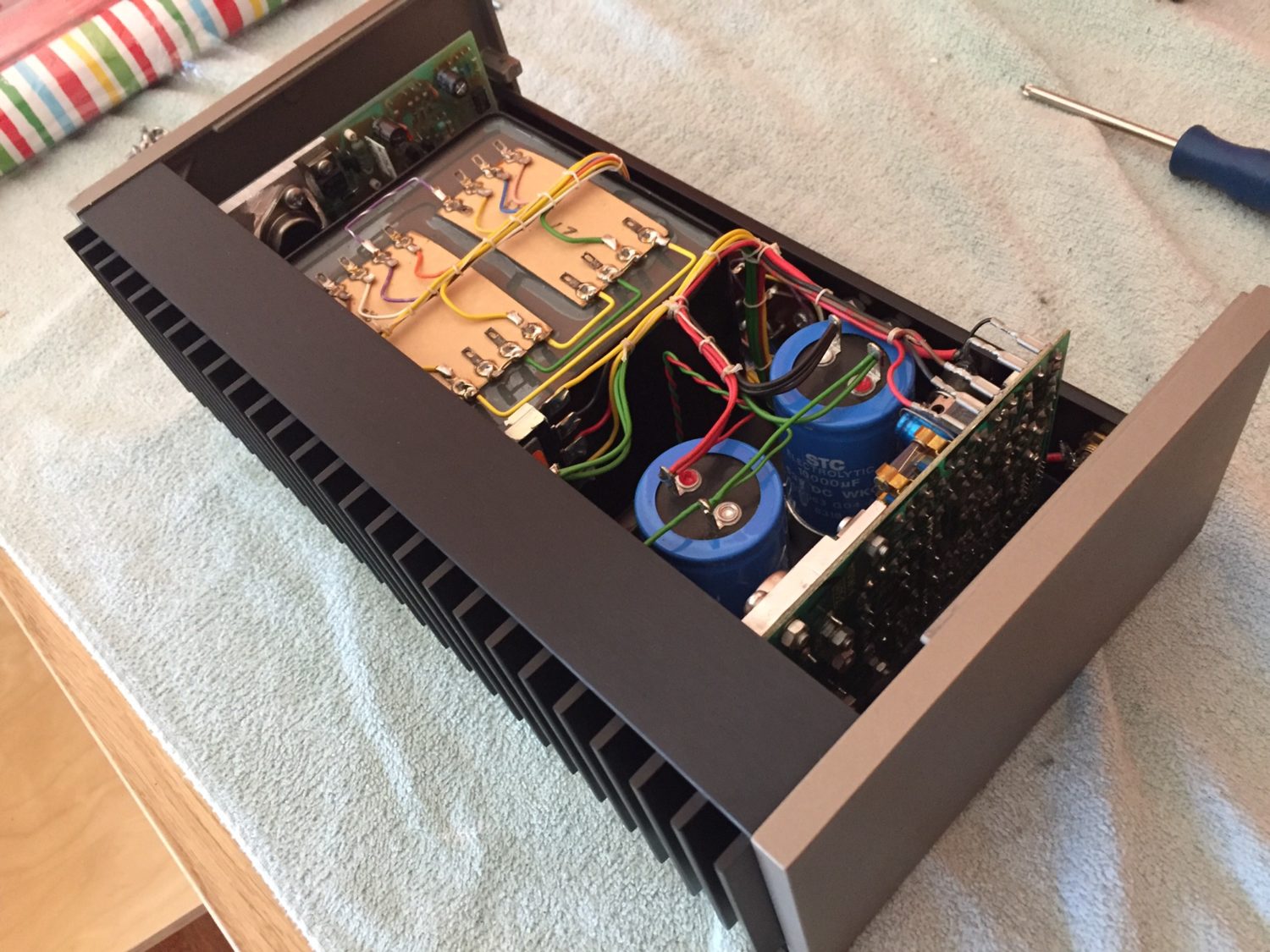
Quad 405-2 Specifications
Courtesy of Hi-Fi Engine
- Power output: 100 watts per channel into 8Ω
- Frequency response: 20Hz to 20kHz
- Total harmonic distortion: 0.05%
- Input sensitivity: 0.5V
- Signal-to-noise ratio: 96dB
- Speaker load impedance: 4Ω to 16Ω
- Dimensions: 115 x 340.5 x 195mm
- Weight: 9kg
Effortless Sound
Quantifying sound quality isn’t easy but let’s get this out of the way – the Quad 405 and 405-2 are beautiful sounding amplifiers and amongst my favourite affordable solid-state designs. They aren’t the best at any one thing, but what they do well, they do very well, and from the moment you hear one you’ll enjoy relaxed, effortless and fatigue-free listening.
Overall, the Quad 405 errs on the warmer, mellower side. These amplifiers add little in terms of distortion, something you’ll hear in the relaxed flow of music and long periods of fatigue-free listening possible with one. If you find a 405 that doesn’t sound smooth, there’s something wrong with it or with another part of your system.
I work on plenty of 405s and 405-2s and whenever I test one in good condition, I’m taken by how incredibly sweet they sound. The lack of glare is noticeable and unusual with solid-state gear. But, as might be expected, original units can sound tired, ‘hummy’ and in general need of TLC at this age. they can also pop and thump at turn-off and many have been messed with, and not in a good way. As always, expert advice is needed here.
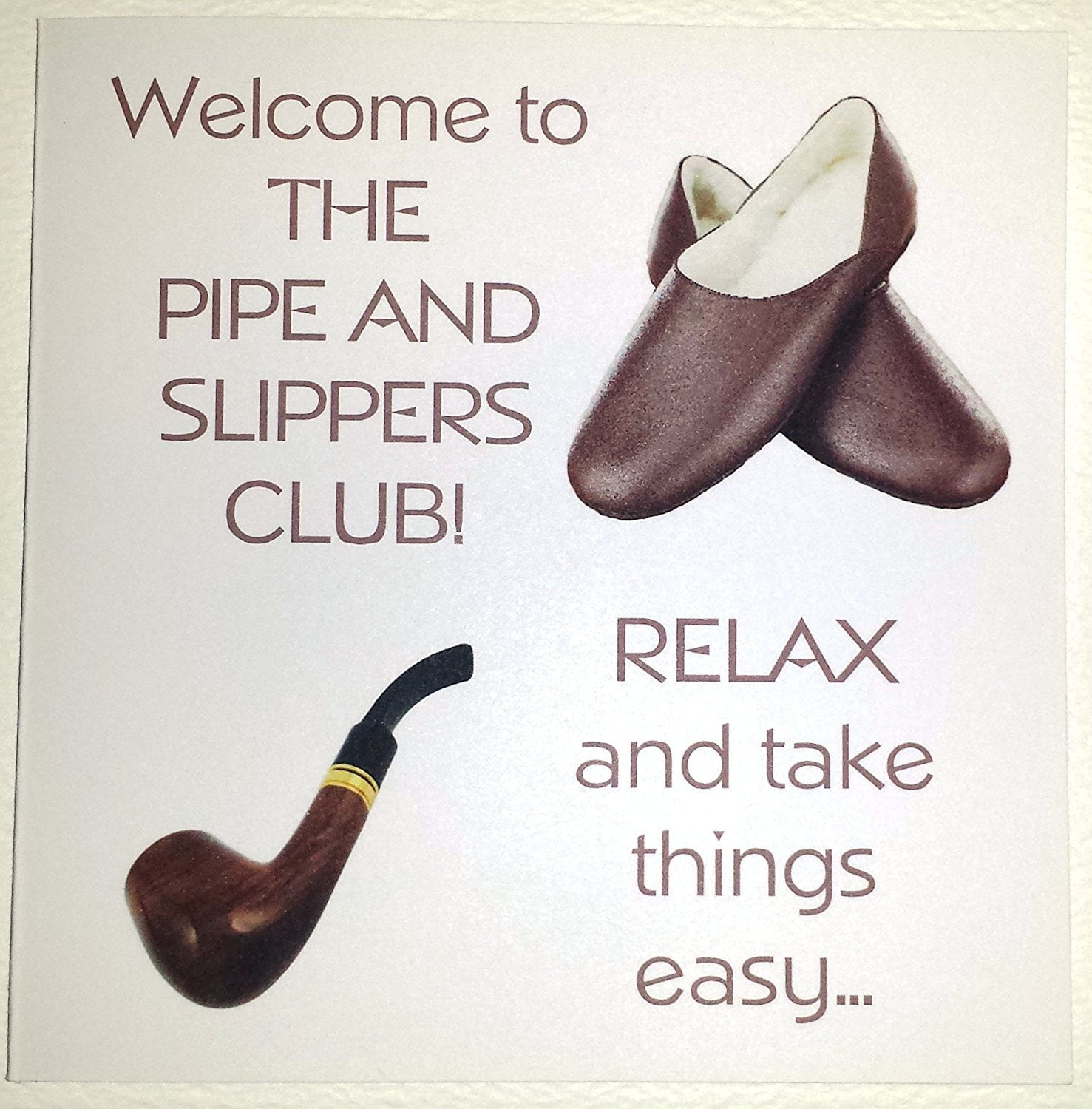
Mellow..?
Some describe the 405 as sounding rolled off, but I disagree. To me, these amplifiers sound smooth and lack the brittle, edgy quality of many transistor amplifiers. Measurements don’t support the claim of a rolled-off top-end, though measurements certainly don’t capture everything, but it’s not a fast, wide-bandwidth amplifier by any means. It’s also unlikely to blow up like one either!
The bass is clean and rich. It lacks the last word in slam and authority. If anything, it’s the bass that’s rolled off to my ears and keep in mind that these amplifiers are capacitor coupled at the input, so they do have an input filter. There’s no ‘bass bloom’ here to flatter small speakers though, just clean, accurate bass. Remember, this amp has just one pair of output devices per channel, so the most current-hungry speakers are going to stretch these diminutive amps.
The midrange is warm, resolved and three-dimensional with good source material. This is a strength of the 405-2, like a good valve amplifier perhaps. Sound staging works to enhance this feeling of three-dimensional realism and pinpoint image. The treble is smooth and never etched or bright. What a welcome antidote to the bright and sometimes even painful solid-state amplifiers so commonly found at this price point.
Overall, a good, fresh Quad 405 or 405-2 is a beautiful-sounding amplifier. My only criticisms are a slight lack of sparkle, air and deep bass compared with the very best. These audible traits separate the 405 and 405-2 from the very best I’ve heard in my listening room, like the Perreaux PMF-5150B, Krell KSA-150 and BAT VK-500. These limitations are dramatically reduced however with a series of improvements that I implement in these amplifiers.
Quad 405 Serviceability
The Quad 405 is an easy amplifier to work on compared to most. The whole unit can be completely apart and broken down to board level in minutes. You can even remove the side panels and work on a module whilst it’s still bolted to the chassis. Check out some of my Quad 405 work here and here.
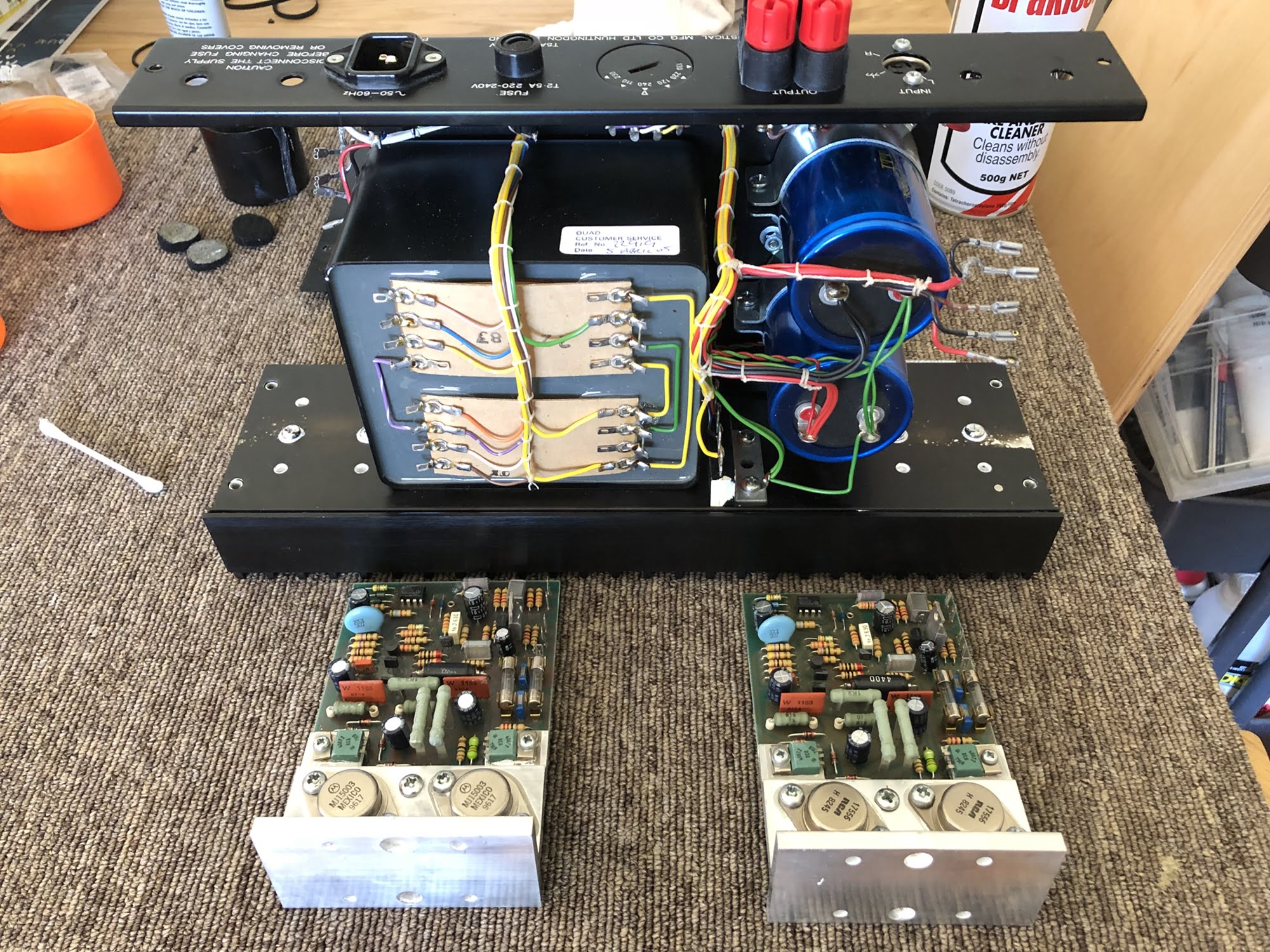
All electronic parts are replaceable with modern equivalents, but the original factory parts quality is excellent. The only issue that is the 405-2 current limiting sub-boards are no longer available, but even this is no real problem. You can remove them altogether if you like to operate with no protection, the amp will work fine without them. Better still, they’ve been reverse-engineered and are available from Dada Electronics for example.
Furthermore, the popularity of the Quad 405 and 405-2 has spurred the development of a range of modern replacement modules. Some are rubbish like these cheap Chinese boards found on eBay for example. But others look amazing, like the NET Audio 405-3 boards, unfortunately no longer available. I had a customer who owned two ‘405-3’ amplifiers contact me and we chatted for a while about how good these modules sounded! More on what they sound like here.
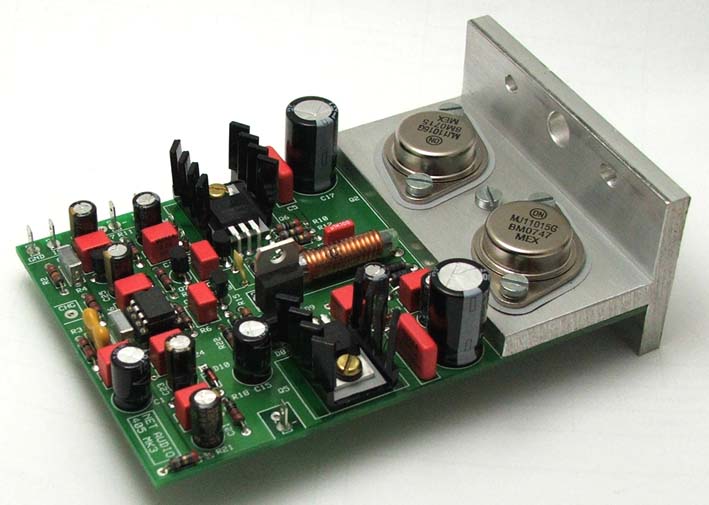

Clones & ‘Copies’
I’m often asked about the cheap boards and 405 clones found on eBay and elsewhere, by people thinking they might save a few bucks by purchasing them. Check the comments and you’ll see I’ve had long discussions with readers about this, and probably won’t have many more as I’ve outlined the relevant details and facts here in this article.
Understandably, people have questions, especially those with limited experience with really good audio gear. I’ll always struggle to understand the sense in trying to save just a few bucks on something that’s already cheap, already a bargain, by purchasing a fake, copy or clone.
Just because a BOM or parts cost for a kit might be less than a real Quad 405, this doesn’t give you a better deal, it gives you a worse, fake product. Real Quad 405s are already cheap! If you can afford one, save up for a couple of extra weeks, for goodness sake!
There’s a strong parallel here with replica watches. Just like a real Rolex or Omega, a real Quad 405 contains premium quality, genuine parts rather than cheap fakes. This is not an opinion: the case, boards and transformer in a real 405 are demonstrably superb, as are the thermal interfaces, loomed wiring, semiconductors, connectors, Roederstein, Vishay, Zetex etc parts used in many iterations.
The original, high-quality parts all contribute to the sound. Clones use the lowest grade re-labelled and fake parts in an attempt to fool the gullible. How is any of that ‘winning’?!
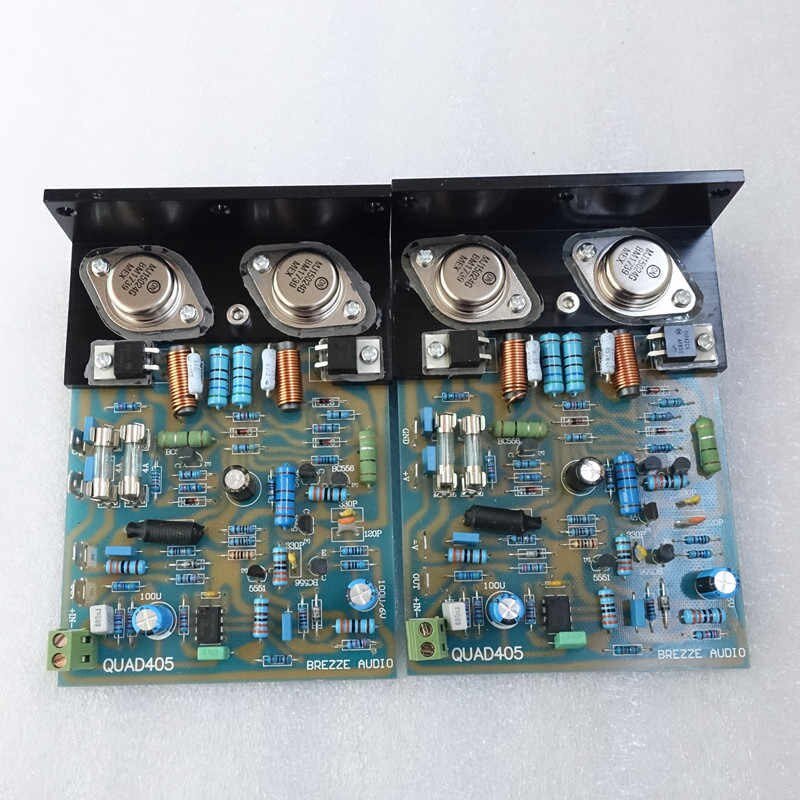
“But Mike, they are Quad 405 boards, it says so..!”
Bemused visitor
No, they aren’t. I can wear a badge that says I’m Brad Pitt, but I’m still not, unfortunately.
Did you know that the superb original potted transformer makes a big contribution to the sound? Clones often use cheap toroidal transformers wound with sorry that’s not real copper and will not sound anything like the original, for this reason alone. Don’t even get me started on semiconductors and how important they are.
China is the number one source of counterfeit semiconductors and most are simply rebadged, cheap parts made to look vintage that are clones or copies of other well-known parts. Real OnSemi 15024 devices are $10 – $20 each, depending on how many you buy. Do the math and figure out how each board can sell for $40 with way more than $40 worth of ‘real’ parts on it. Anyone..? Bueller..?!
A real Quad 405 or 405 board contains the actual DNA and parts specified in the original design. Replicas have redrawn boards, circuit changes, and cheap board material, populated with fake parts. They have no performance guarantees and are built and sold by people cashing in on the desirability of the original product and on buyers looking to find a ‘bargain’.
Confirmation Bias
If you’re looking to buy a clone, you are likely inexperienced, misunderstand the concept of bargains and haven’t heard a real 405 or 405-2. The replica watch comparison is an excellent one.
But Mike, I’ve read the reviews of people who’ve bought these, they love them!
Another bemused visitor
Look harder, definitely not all of them, I’d say most with a clue eventually discover they are rubbish and a waste of money.
Confirmation bias ensures that you’ll read positive reviews from people who’ve convinced themselves that these are great value. These reviews are typically written early and can’t be changed when the amplifier fails and the ‘value drunkenness’ wears off. A lack of experience means that, for many, a clone may even be the best amplifier they own. It may even be their only amplifier, further harming the credibility of such reviews.
So, would you wear a fake Rolex? Do you think a ‘clone’, with a cheap imitation case, heatsink and fake parts is good value when you can get a real one for around the same money? If you answered yes, buy a clone, but just don’t call it a bargain. Call it what it is – a rip-off, low-quality copy of one of the great amplifiers, made by people who don’t give a $hit about freebooting other people’s hard work and IP.
For everyone else, clones, replicas and counterfeit parts are a waste of money for the same reason fake watches and fibreglass Porsches are. A real Quad 405 or 405-2, made in England, is a genuine hi-fi bargain, often selling for only a few hundred bucks. These amplifiers still represent the ultimate high-value hi-fi. Yes, they are old, but so what? Have a skilled technician put a few hours of work and some parts into a Quad 405 and I guarantee you won’t be able to stop smiling.
Buy a real Quad 405 and you’ll help by not funding the production of counterfeits and ripoffs. Have your amplifier professionally overhauled and you’ll have a low-cost, high-value hi-fi friend for life! I’ve kept mine after all these years and I’ll likely never sell it.
System Matching
People also often ask me “What would go best with this” and so on. For a while, I ran my Quad 405-2 with a pair of Yamaha NS-1000M monitors. This is an excellent match, the slightly mellower sound of the Quad 405-2 is a great partner to the airy clarity of the wonderful NS-1000. Ultimately, the Quads lack the authority and resolution of the best amplifiers in this use-case though. I now drive my NS-1000s with my Accuphase P-360 power amplifier.
Many will also be aware of the legendary Quad electrostatic speakers like the ESL-57 and later ESL-63. Quad designed the 405 and 405-2 to drive their speakers, so this is also an excellent match, though as a commenter pointed out, the ESL-57 can be too tough a load for many amps, so the 405 and 405-2tely better with the ESL-63.
The 405 and 405-2 ultimately lack a little scale and gravitas though, so don’t expect one to drive your Infinity Kappas as it just won’t work. The Quad is better suited to small to medium-sized speakers of moderate sensitivity, in moderately-sized rooms. Remember what the Quad 405 is and how much they cost, and that will help keep expectations in check.
Overhaul & Upgrade
Unimproved Quad 405s and 405-2s currently sell for around $500 – 750 AUD. They would be a deal even at $1500, so they are a fabulous buy for less. Seriously, what else can you get that sounds this good for 500 bucks? The best thing is the understatement of these lovely amplifiers, like fine pieces of 1950s English industrial art.
It’s a very good idea to have your 405 or 405-2 overhauled if it hasn’t been. Many are running original capacitors and parts, a testament to their durability, but they can be dramatically improved. This is something I’ve been doing for a while now (EDIT: I guess around 15 years as of 2024), with great results. I have a series of improvements I can apply to your 405 or 405-2, tested and implemented for various customers, and in my own 405-2 of course. The sonic benefits are not subtle, turning this already great-sounding amp into something even better.
A full restoration is an even better idea, part of the complete overhaul and upgrade process I’ve developed for these amplifiers. This includes output-matched devices, thermal pads, op-amps, special MIL-spec silver mica, polystyrene and polypropylene capacitors, various premium electrolytic capacitors, new lab-grade power supply caps and more. Everything has been carefully chosen and tested for the best results.
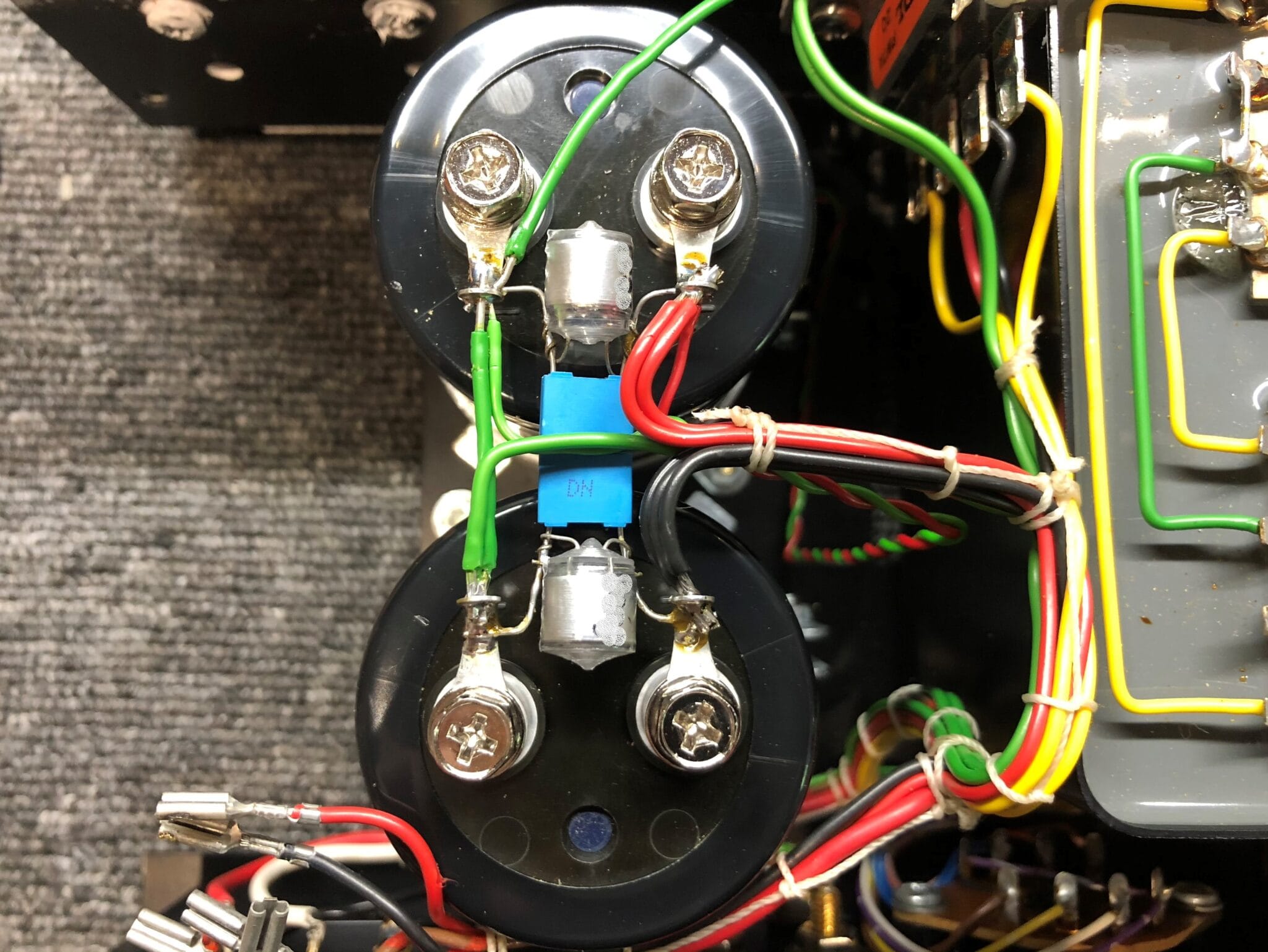
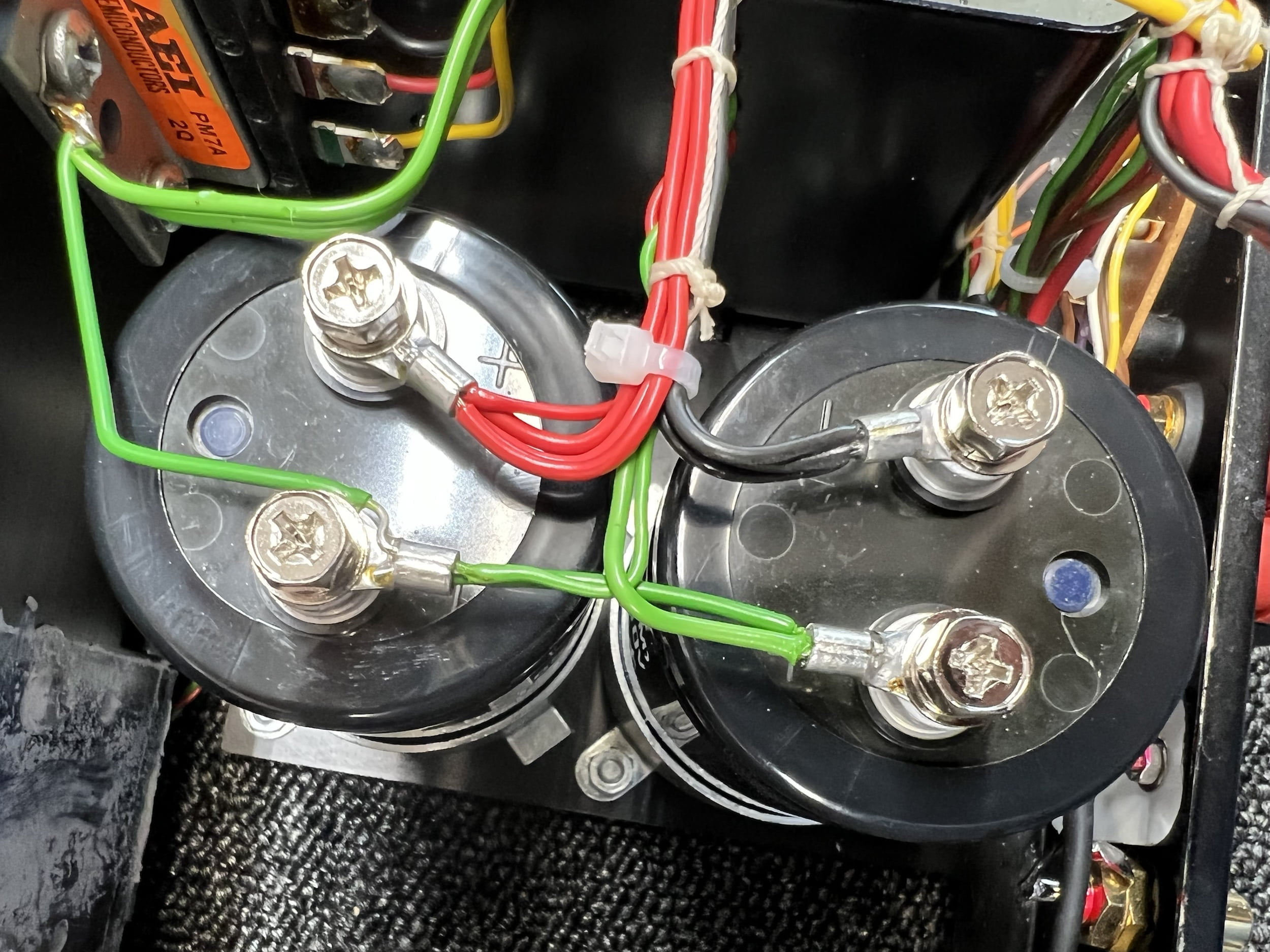

I’ve had customers ask if it’s worth upgrading a Quad 405 or 405-2. Consider that to replace a 405 or 405-2 with something decent but that probably won’t sound as good, will cost $5000 AUD or more. With this in mind, spending a few hundred dollars to refresh and seriously improve your Quad is one of the great no-brainers in hi-fi!
Have a go if you know what you are doing, but if you don’t, spend the money and have the work expertly done. I’ve seen too many of these amps where people have fiddled and caused problems. Consider what you could be doing to earn money while an expert works on your amplifiers instead! If in doubt, look at the 405 above.
Further Reading
The Stereophile reviews of the 405 and 405-2 are good places to start to get your head around what people were thinking when these amplifiers were released. I’ve written a lot more about the Quad 405, including several pieces about restoration, modifications and upgrades, and servicing. Positive Feedback has a great piece, with lots of mods and other technical details. Yet another page lists more modifications and upgrades.
One of my favourite resources is Keith Snook’s fantastic Quad repository. Keith goes into detail about his journey with the 405 and breaks things down over two large and very detailed pages. The first covers the original 405 and its various iterations, the second covers the 405-2.
The Bottom Line
If you want an amp to soothe the soul, I encourage you to listen to a Quad 405 or 405-2. Better still, just grab yourself one to play with on a rainy day, you won’t regret it. For the price you’ll pay for the genuine article, you simply cannot go wrong.
If you already own a Quad 405 or 405-2 and you’d like me to service, overhaul or improve it for you, visit our Contact page to get in touch.
If you enjoyed this article or it’s helped you choose a Quad 405, you can say thanks by buying me a drink via the donate button. You’d be amazed how many people read this, yet have never said thanks, let alone bought me a drink. Many people only want to take these days, sadly 🙂
Discover more from LiQUiD AUDiO
Subscribe to get the latest posts sent to your email.

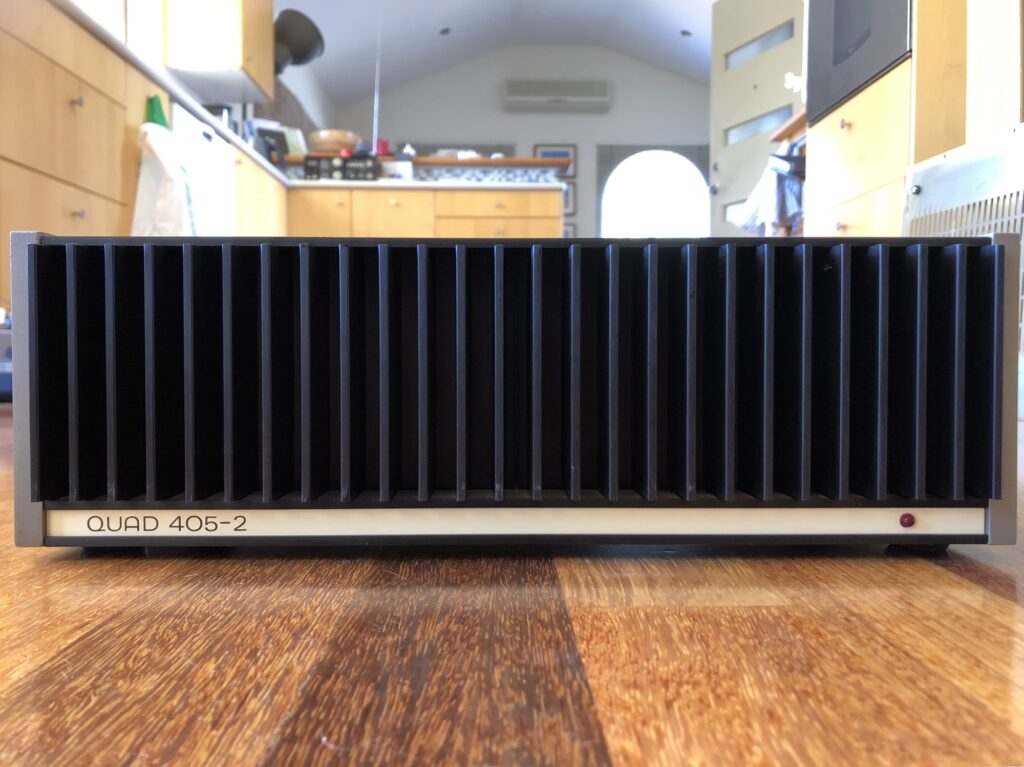
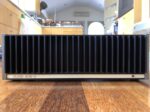
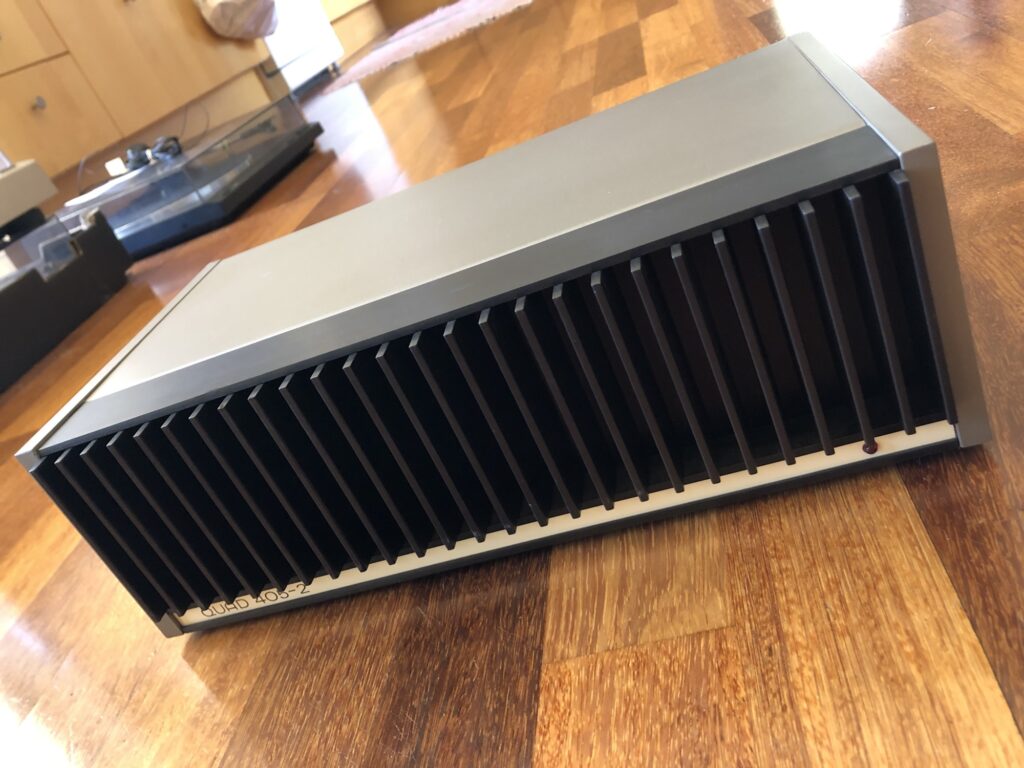
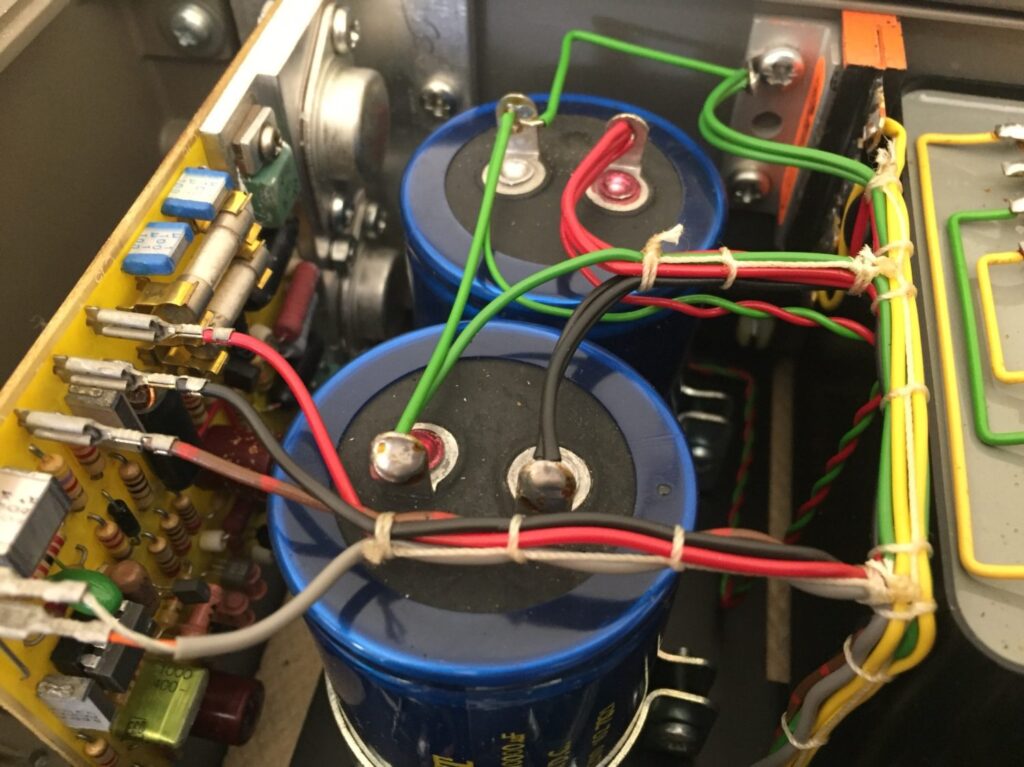
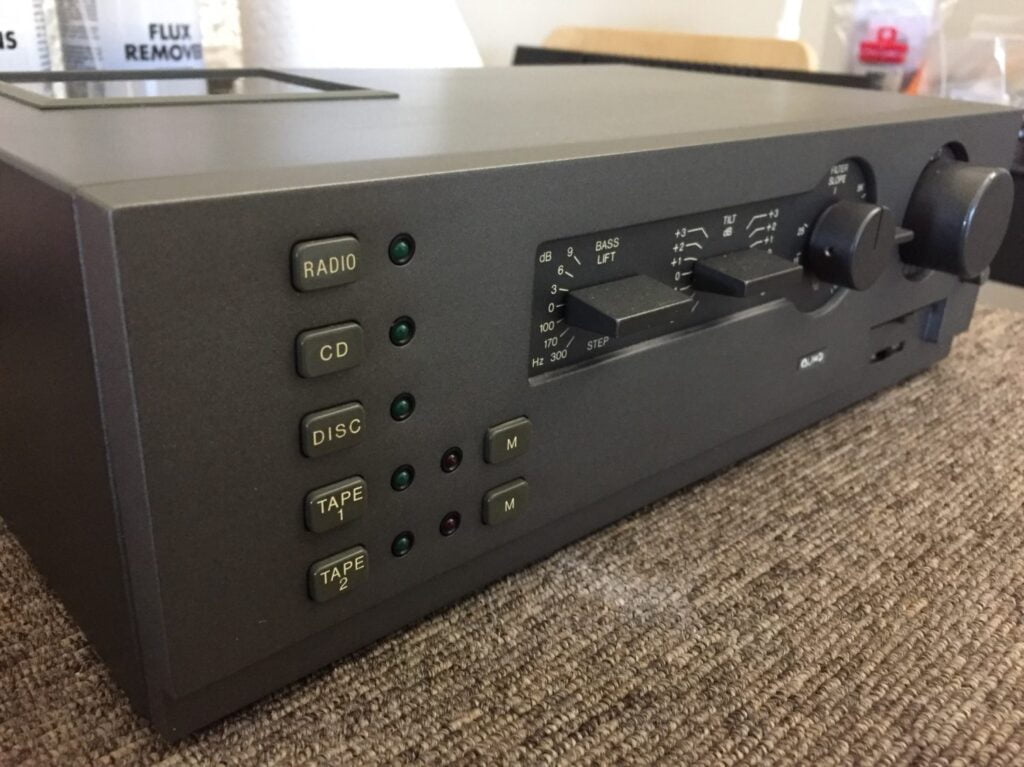
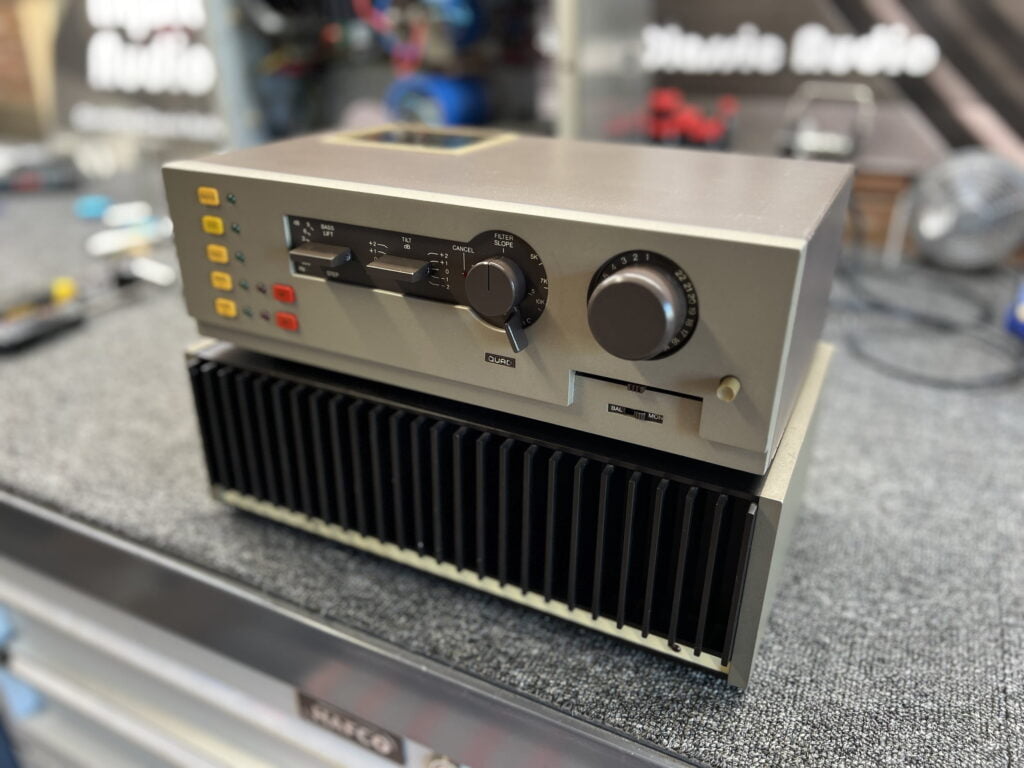
Interesting article. Why do you think that the Chinese boards are rubbish? Looking at the circuit diagram for the 405, it’s pretty basic and the component cost won’t be a lot. With modern cad I would expect a better pcb layout to be achieved than the original along with better modern components than the original. Have you actually tried the copies to justify the comment? I’m asking as I’m looking at makin a modern ‘copy’ but adding a streaming server to it.
Hi Richard, thanks for leaving a comment and I’ll elaborate on a couple of points here that hopefully will help.
Have a good look around my site and you’ll see that I’m interested in helping people make smarter, more informed choices, by sharing some of the work I do here @ Liquid Audio. If I don’t have first-hand, factual information about something, I generally won’t comment on it. If only more people shared this philosophy! 🙂
With that in mind, yes I’ve seen some of the Chinese Quad boards and they were of poor quality, hence my comment. Some I’ve seen are not copies, hence you are not getting a 405, and board quality was poor. I haven’t seen all of them of course, there may be some good copies. Sadly, most cheap Chinese hi-fi and audio boards are of low quality.
Regarding parts, no, modern parts are not automatically better. Some modern parts are better, some are worse and the commonly available Chinese parts are usually terrible, especially capacitors and semiconductors. There are tiers or grades of parts too, with vintage and modern parts. With Chinese kits, there is no QA in terms of what you’re getting, no way of knowing if the CAD layout is better, it could be worse.
The folks buying this stuff are generally not in a position to make informed observations regarding these points either. There are so many terrible fake semiconductors and caps out there now from China that many professionals won’t buy them at all, myself included. I only trust the QA and supply line QC of large commercial vendors like Mouser Digikey etc.
So, with these things in mind, I can’t see the point of knock-off boards/amps when you can buy a real Quad 405, with superb original boards, transformer, case, parts and pedigree, for a few hundred bucks. There are (sorry, were) of course the Net Audio ‘mk 3’ boards, they look good, haven’t heard them though.
In my opinion, there is only one path to follow with classic audio gear that’s to get the real deal. It’s all about the history, the pedigree, and the fact that it sounds the way it does because of the layout and the parts.
Anyway, hope this helped!
“A real Quad 405 contains premium quality, genuine parts”
That is not true. The transformer, the case and the PCB’s are the only quality parts. Until the release of the 405-2 capacitor C8 was a cheap ceramic disc item rather than a stable Polystyrene or Silver Mica item. The resistors were far from the best available during the late 70’s into the 80’s when sales peaked. The electrolytic Capacitors again just middle of the road.
Most of the bare PCB sold on Chinese vendors Internet shops are based on the first Quad boards complete with Zobel grounding error that will fry one of the output transistors if followed. The boards populated or sold as kits have mainly low quality components apart from the inductors which when measured with a bridge or calibrated LCR meter are accurate enough. The resistors are within stated range, the caps are of mediocre quality.
Its ludicrous to suppose that a $£€30 kit would include 4x ONsemi MJ15003G when I can only get a price of £3.85 each if I order +1,000 from RS Group.
There is one bare PCB worthy of mention from a Chinese vendor of some repute. Jim’s Audio sell an exact copy of the DaDa electronics “high end board”. He sells them for about $11 USD each. 1.6mm, 2oz CU as measured, through hole plating is on spec. A BOM fed into any of the European or US electronic supplier behemoths will give a figure of less than €£100 each for all high quality components. Caveat is that you need to be able to make soldered joints to a decent standard.
Buying a 40 year old amplifier from ebay for £250 does not represent a bargain, it represents a person willing to gamble his money. The ratio of botched repairs and shoddy recaps to untouched amplifiers is extremely high. Labour comes in at between £€40/58 per hour in Northern Europe at the moment, slightly cheaper in the sticks. If you buy a Quad from ebay and you notice a buzz or big thump on shutdown you may rack up a large bill to have it rectified.
Hi Ian, thanks for commenting. Everything I’ve stated is true and factually correct as my readers expect, though we can agree to disagree. You’ve missed or failed to understand much of what I’ve written though because you’ve just re-made many of my points anyway.
Yes, the case, boards and transformer in a 405/405-2 are superb (as I said!), as are the thermal interfaces, loomed wiring, semiconductors, connectors, Roederstein, Vishay, Zetex etc parts used in many iterations. That’s most of the amplifier.
Yes, better parts can be fitted to a 405, something myself and others have been doing for many years. It is a piece of consumer electronics so that’s normal, but it’s a thoughtful blend of great design, parts choices and build quality, way better than many.
Yes, it IS stupid to believe that cheap kits would contain genuine parts (again, as I said), yet that’s how they are fraudulently marketed and many DO believe it, especially the people these kits are aimed at.
Yes, there are bodged 405s, 405 clones and everything else out there because the wrong people work on things, but a bodged 405 will still be a real 405 once repaired. Sure, you can buy boards, a chintzy chassis, cheap transformer, parts, fasteners, hardware, connectors, wire etc, add the build and debug time, all of which will come to way more than a real 405 when properly costed, for an inferior, fake 405. Why would you though?
I’m amazed that anyone would think a pile of cheap/fake parts of unknown provenance is less of a gamble than a real, complete, made in England amplifier, but the fact that I even need to make this point again highlights the problem. Folks looking at this equation and thinking it’s actually a good idea are exactly who these kits are made for.
Yes, a skilled technician should go over a 405 or any other piece of vintage hi-fi gear. This is as sensible and hopefully obvious as having a mechanic go over an old car or motorcycle.
Real Quad 405s are unbeatable value, this is indisputable, but fibreglass Porsches, Ferraris, fake watches and 405s exist for a reason and will continue to. Readers must decide for themselves whether they want to be a part of that.
I’ll end the discussion here but happy listening and thanks again for taking the time to comment.
What pre amps would be a good match with the 405? Any benefit in running two 405s and two preamps as a dual mono (stereo) signal chain?
Hi, any high-quality, transparent preamp will work with a high-quality power amp like the 405. Obviously, synergy with the rest of your system and room is very important here, so you’d need to consider this. The 405 can be bridged and run as a mono amp, but realistically, there’s plenty of power there with the 100 Watts a side available with a single amp. It would certainly be interesting to try though!
Would a quality PASSIVE PREAMP suit the 405/1 and 405/2? I’ve not spotted any mention of the Voltage Gain of the 405, so this aspect interest me. Thoughts?
Spectacular site, BTW. LOVE what you do!
Thanks for visiting and glad you are enjoying the site! I don’t generally recommend passive preamps, but they could be used here with a robust line-level source and an unmodified 405 or 405-2. Many 405s have had their sensitivity reduced to conform to modern standards. This should be evaluated, but as long as their high output impedance and other limitations are understood, a passive preamp might be OK or even very good here, depending on the details.
I’ve found that the Schiit Saga is fantastic in front of the Quad 405 with a RCA Black Plate tube in there. I’ve never heard more life like sound reproduction. The 405 is magic with Aurum Cantus F620 speakers (4 ohm).
I too am curious about the Chinese 405 Clone boards. As recently as 2006 I was still able to source rebuilt boards from Quad Electronics (International Audio Group) directly from their Huntingdon address for about $90, but I don’t know whether they offer this service anymore.
Instead I can buy a pair of boards for $50-$60 including shipping from China, such as this listing from Douk Audio: https://www.ebay.com/itm/Douk-Audio-QUAD405-Power-Amplifier-2-0-Channel-MJ15024-Hi-Fi-Amp-Assembled-Board/251715936179
The other options are: spend a few weekends troubleshooting, repairing, and recalibrating the blown board myself or spend $200+ on a replacement or a professional repair.
Have you measured or listened to any recent Clone boards? Thanks for any feedback!
Hi Ralph, thanks for your question and I realise there are a lot of misunderstandings around cloned boards. I’ve covered some of this in a previous answer but I’ve elaborated here on a couple of important points, I hope it helps.
Yes, I have looked at some 405 clone boards and no, I cannot recommend them as a general rule. No, I’ve not seen all of them and no, I’ve not measured any clone 405 boards. I choose not to work on cloned stuff from China, read on to find out why.
Consumer-grade Chinese boards contain generally low-grade parts of unknown specification and performance, in most cases non-genuine or fake semiconductors and are generally unqualified and of unknown performance. Clones often contain circuit changes that mean they aren’t even clones. It’s very simple, you’ll end up with an amp that isn’t a Quad 405, with unknown performance characteristics, and it’s probably not even cheaper overall!
The original boards are well designed, easy to work on and repair, contain excellent parts of known quality, meet known performance specifications and are the real deal historically and electrically. I guess we each have to decide which elements of that are important to us. For me, originality, parts quality and verified performance are critically important.
I completely understand that this isn’t the answer many want to hear, but it comes down to getting what you pay for. The same can be said for fake watches. At first glance, they appear very similar but dig deeper and there is a world of difference between a fake and the real thing. The devil really is in the detail.
I mention fakes for good reason. Genuine MJ15024 output devices are around $10 each, from trusted vendors. Does this $50 purchase really contain $40 worth of genuine MJ15024 transistors? What about the cost of all the other parts, aluminium, shipping..? The BOM for these boards using genuine and known-brand parts would come to $100+. When you do some math, you’ll realise that something is amiss.
Fake semis are highly problematic and exceptionally common in cheap Chinese gear. When one dies, you relace it with perhaps a genuine semi, and no longer have a matched pair, because the fake used a different die. This causes circuit instability and round and round you go. You always want genuine semiconductors, without exception, so I would be replacing every transistor in one of these kits with the real thing, further adding to the cost.
Now I’m not saying don’t try to build one of these, by all means go for it, but realise what you are, and are not getting. Also realise how inexpensive the genuine article is. When you add in the cost of boards, transformer, case, wiring, connectors and time, I can’t see the value in a clone.
Anyway, I hope this helps and don’t hesitate to let me know if you have other questions.
Nice answer, thanks!
No problem at all!
Hello, thanx for your review.
On the cons list, I would add bad protection from electrostatic shock.
I touched mine with our hoover and the main amps blew .
It’s happened twice to me. I guess I was not careful enough, or I forgot to use an outlet with ground.
Now I’ve switched to Japanese gear that doesn’t need or have a grounded mains.
Now I’m thinking of selling mine with the Quad 33 pre-amp or upgrade both with new parts and phono connectors.
Cheers!
Hi Lars, thank you for your kind words and comments. The 405 and 405-2 are earthed by design and superbly engineered in every sense, including safety. Going a step further, the schematics of every version show that chassis earth is part of the design, so the fault you’ve described shouldn’t actually be possible with an unmolested 405 or 405-2 and a properly earthed mains cable and mains outlet. Many 405s and 405-2s I come across have been messed with and have reduced performance and safety as a result of poorly thought out and implemented modifications. This may be part of the story, or maybe there is something else going on there with the vacuum, wiring, mains outlet or amplifier.
Thanks for the detailed answer. Since the time I asked this I built a DIY tube amp and also ordered a class A headphone amp from the Breeze Audio site on Aliexpress, and was pretty impressed by the parts quality. I think there exist vendors in China who are deeply enthusiastic about audio and use high quality components, servicing both the local audio community as well as hobbyists in Europe, Asia, and the Americas. In some cases this means cloning classic gear which is otherwise not available new anymore, at very reasonable prices. I’m sure there are also scams, but I suspect these are less likely with the established vendors who have reputations to protect. I also don’t think China has a monopoly on scams!
Hi Ralph, no problem and my apologies as I don’t recall your original message, nor could I find it quickly. No, China definitely doesn’t have a monopoly on scams, but a huge volume of hi-fi ‘junk’ does originate in China, unfortunately. The other issue is that most end-users, hobbyists etc, for various reasons, are unable to distinguish between fake and real parts. Many capacitors supplied with Chinese kits, for example, look like the real Nichicon MUSE, Elna Silmic etc, when they are in fact fake parts with far inferior performance. The same is true of many semiconductors and only careful testing or destructive analysis can determine the non-genuine nature and sub-standard specs of these knock-offs. Having said all of that, there is a smaller proportion of good gear from China, some of it really good, though it tends not to be the cheap stuff. The fake parts problem is pervasive and a very real problem, but I’m glad you’ve had some success with the kits you’ve built.
Hi Mike just wanting to know if you can recommend a service centre in Sydney for my Quad system.
I run a 44 preamp with bridged 405s and Quad 66 CD Player into Kef Corelli speakers.
Its approx 30+ years old now and still sounds amazing but would like to see what updates are available for all units.
Thanks.
Brian.
Hi Brian, great system! Unfortunately I can’t recommend any one over there. I’ve only dealt with customers who’ve had bad experiences on the east coast with things like this. Most service centres don’t offer improvements either, they tend to provide basic parts or board replacement services. Feel free to call to discuss!
Thanks for the info what’s the best number and time to contact you on?
It still runs well considering its age, got to admire British quality! so any thoughts you have would be appreciated.
Hi Brian, the number and business hours are on my home and contact pages. Look forward to chatting with you!
I have two Quad 405s. The first is a 405-2 that I bought in 1984. It has been completely reliable over its 37 year lifespan and has never been touched internally. The second is a 405 made in the 70s that I inherited from my father. It too has been totally reliable in my ownership although there is a sticker inside indicating that it was serviced sometime in, I think, the 80s by Quad in the UK.
Both these amplifiers have traveled the world with me. Unfortunately the older amplifier suffered some water damage when it traveled as sea cargo. It has been refinished a Toyota metallic black by a local car paint shop (it was what they had!). It looks fine but I prefer the original finish. At the same time I replaced the boards with the latest available 405-2 boards.
Both amplifiers are in regular use. As I have more amplifiers than I need I alternate the two 405s.
As has been noted these are superb well built amplifiers and you can listen to them for hours on end without getting tired of them. The 405-2 I bought in 1984 is probably one of the best bang for buck purchases in my lifetime.
Hi Thomas, thanks for sharing your thoughts, a lot of us love the 405 and 405-2!
Hi! Really enjoyed this article. When I was a broke, young 2-something back in the late 80’s I was able to charge my first entry-audiophile system with a Quad 405-2 driving Vandersteen 1-B’s and it was the most amazing setup I ever heard. I was so pleased with it. I had to part with the Quad a few years later and have mourned it ever since. Now I’ve just purchased an original 405 refurbished, (hopefully well, haven’t received it yet) and will be driving a pair of NHT 3-C’s with it. Of course, after ordering I read up on the 405-2’s better performance driving lower impedances, and was wondering how the old 405 might do with a 6-ohm load. Ironically, my other good bookshelf speakers, an old pair of PSB’s are also 6 ohm, which is obviously comparatively rare for home audio. Have you or any readers had experience with a 405 driving a 6-ohm load? Just curious 🙂
Hi Jeffrey, glad you enjoyed the article. The 405 is fine with 8 ohm loads and possibly lower, but the 405-2 is better where more current is needed. This is all technically speaking of course, in reality, you can drive 6 ohm rated speakers with a 405 and it will work just fine, just not quite as well as a 405-2. What that translates to in sonic terms is a little less grip and authority. Hopefully, your 405 has been well refurbished, as many are not.
Very good. A couple of comments if I may.
1. The current-limiting networks are indeed still available, being used in the 909 which is still in production.
2. The Chinese clones I’ve seen are all based on revision 1 of the circuit, which was superceded not only by the 405-2 but by several revisions to the original 405. Some of the clones even trumpet the use of the ghastly and glacial u741 which was one of the first components to be superceded.
EJP
Dada Electronics Australia
Hi Esmond, thanks for visiting the site and I’m glad you enjoyed the article. My apologies for the delay in approving this, it somehow drifted out of my field of view!
I also use a Schiit Sega preamp with my Quad 405-2 power amp and I’m very happy with this combination. My setup is the solid state Schiit Sega which is longer available.
I have also tried it with a Tube preamp but found this combination to be a little bit too rolled off at higher frequency. The more neutral Sega is a much better match.
Thanks James, the Saga (not Sega) should work well. I’ve used the better sounding Freya with a 405-2 and it’s a nice preamp. Clean, neutral preamps like these will work well with the 405 and 405-2.
I have the matched pre amp and original 405, linn cable and castle severn with monacor yellow drivers set up in my daughter’s bedroom either side of the bed crammed into the corners and despite such a poor set up the sound staging is still very good and I can sit there for hours listening to cds via a classic rotel. A sin I know but very rewarding.
That sounds like a great set-up Bill!
How do you think the 405 would be driving a pair of JBL 4333?
Also, I would want to find a suitable pre-amp that has a good phono section and a remote. Any suggestions?
Hi Gary, I’m sure the 405 would do well in this role, but there will of course be better options. For specific advice, I suggest you visit my contact page as noted in the comment header and submit your question with a few more details there!
Hi Mike, I have two 405’s and a pair of mono Mod Squad 405’s, all of which need servicing. Being in the US, round trip shipping alone would $600-$800 for the set. After reading your article I would prefer to send them your way, but overall cost is a consideration. Do you recommend anyone in the States (I’m in N. California) that might be worth contacting?
One other question if I might. When mono strapping these amps, I heard that there were two configurations. One would take the 100/w stereo amp and give you a 100/mono amp with high current capability for low impedance loads and the other would give you a much higher wattage rating into an 8 ohm load, but not suitable for lower impedance loads. Almost like a series/parallel comparison when hooking up speakers. Is this true, and do you know how McCormick (Mod Squad) used to do it? Thanks in advance, Chris
Hi Chris, thanks for your questions. Shipping to Aus would certainly be expensive and I’d rather you didn’t send them all this way. I don’t know anyone in the states doing this sort of work I can recommend. That doesn’t mean there aren’t people doing it, it’s just a case of finding them and making sure they do the work well, rather than just doing work on Quad, and there is a very big difference from what I’ve seen first-hand.
The two mono configurations make sense given the internal layout of the 405 and voltage limiting option, but I cannot comment on how others have implemented these configurations as I don’t have that information.
Hi Mike. Is there anything that can be modified to have a deeper bass? At lower volume the bass is lacking the punch. At first I thought that the speakers are the problem, but it seems not. Mids and highs cover the bass by a high margin at low volume. Is it ok to use an equalizer (like APO) and increase the amplitude for bass frequencies ? Will that damage in anyway the amplifier? What do you think?
Hi, thanks for your question. Yes, I offer a series of improvements that extend performance in all areas, with customers typically reporting that they find the bass to be significantly improved. I generally don’t recommend equalisation, this usually indicates the need to attend to other problems like room issues, system composition/improvement and listening habits. EQing bass can be risky, so use it with caution. Amps and speakers can be damaged due to exceeding the power envelope (clipping) or driver excursion limits.
Thanks Mike for the quick answer. Do you also provide schematics for doing these changes and at what cost?
No problem! Unfortunately no, I don’t offer kits, instructions, schems etc, equipment needs to come here for work. This eliminates QC issues and allows me to keep what I’ve developed in-house.
Hello Mike.
I grabbed a 405 at a local thrift shop today for 100 Euros…. Haven’t tested it yet as I need a 4 pin DIN to RCA lead first… So no clue if it works 🙂
The power light gets on at least. But good thing is a 100% refund if it doesn’t work….
I want to use it with my old Spendor BC1s, and i hope that will be a good match.
What is your opinion about using a cheap modern preamp with it ? I was thinking about something like the Pro-ject Maia Pre Box….
Hi Steinar, great work getting the worlds greatest hi-fi bargain there! For 100 Euros I’d be keeping it whether it works or not and having it properly overhauled. Use it with the best sounding preamp you can afford. Doesn’t matter so much if it’s old or new, it just needs to be good. I can’t find any info on a Maia preamp but a lot of this type of gear tends to be filled with digital, bluetooth etc and sounds ordinary, so be careful there.
Hi, proud owner of a 405-2! Works great except one of the banana jacks broke. I would like to replace it, but cannot find a suitable female jack. My 405-2 has small jacks. I suppose I could replace all four jacks but would rather not. Anyway, I don’t have the current/voltage specs for these jacks. Any idea what i can replace them with?
I would live to send my unit to you but i live in the states.
Thanks!
Hi Scott, thanks for your question and glad you enjoyed the article! As you might imagine I receive a lot of enquiries like this and have a process for dealing with them. Technical queries like this may be submitted via the contact page, as noted in the comments header.
Lovely review and proper credit to this fantastic amp. However unlike the ESL63, I wouldn’t drive the ESL-57 with a 405.. the dumping circuit doesn’t like the very low impedance and the tonal balance goes off the rails – plus you could do real damage. A transformer coupled amp or a Quad 33 is a much better option. I later ended up with a Beard P35 tube amp which was a real step up from the 33 and had good synergy with the 57.
Thanks for your comments Eddie and really glad you enjoyed the article! The 57 is indeed a tough load, too tough for many amps, I’m glad you found the Beard a good match.
Sorry I meant Quad 303 as amp, not 33.
Found your interesting site recently: I have two 405’s, each transformed into mono amps, and have these appr. 40 years now. Connected with TDL (AOSsystem) and a Marantz cd with build in volume control. Cannot find better sounding gear :-). Kind regards, C.
Glad you are enjoying them!
Hi Mike. I’m in the UK and looking to purchase my first 405-2! There are plenty of used examples out there, the problem for me as an inexperienced buyer is which one! One I’ve seen is the later grey version with RCA inputs from new, rather than a modified earlier 405-2 to accommodate RCA input. Do you have any views of the later models? Thanks. James
Hi James, great work, you’ll really enjoy it I think. I always suggest people try to find a cosmetically good and as original as possible unit that hasn’t suffered from the usual tinkering, and then have it really well overhauled by someone very familiar with how to get the most out of them. Earlier 405-2s are preferable to the very late ones, some of the nicest are those with the lovely 2SD424 output devices up to about s/n 75000 or thereabouts.
Hi Mike. Thank you so much for replying. I’ve dipped my toes in the water! Purchased an early model which has been upgraded (properly it seems). Lots of upgraded parts. Collecting tomorrow so pretty excited. I need to source a separate now for volume control. A tube preamp might be a good match? I like the vintage sound and my speakers are LS3/5A variant. Decisions to be made!
No problem, one way to tell if it has been properly looked at is to measure DC offset at the amplifier outputs. This should be less than 3mV in good examples. Likewise, AC hum and noise should be essentially zero.
Hi Mike
Just read your article again, have read it many times over years, very well done – very informative.
Had my 405-2 ( bought new in 84 ) refurbished by IAG / Quad late last year ( still fantastic service after all these years )
Think I’ll make some upgrades now I know it’s all up to spec, thinking Dual Power supply and upgraded Caps etc.
Best regards
John
Essex England
Hi John, thanks for visiting and for your comment, it’s incredible how these venerable little amplifiers still generate so much enjoyment all these years later. Keep enjoying yours!
Hi Mike
Have to admit delighted with how it’s performing with, Oracle MK 1B / FR 64 Black ( both bought new in 83, so long ago ! ) Denon 103 into WiiM Ultra ( incredible value for money ) and quite brilliant PSB T54 speakers.
Will you do any follow up articles on 405-2 or are you satisfied with those you’ve already done ?
Regards
John
Hi John, good question, I’ve written a fair bit on the 405 and continue to work on many each year, but it is probably time for another article or two, maybe on the 606 and 909 which I also see a lot of. Time is the problem!